Magnet fishing looks simple: toss a strong magnet into the water, pull, and hope you land metal treasure. The idea hooks people fast, but beginners often hit snags—weak gear, bad knots, unsafe spots, or wrong expectations. That leads to wasted weekends and money. The fix is a clear plan: choose the right fishing magnet, set up the proper magnet fishing supplies, learn safe technique, and follow local rules. This 2025 guide lays out everything step by step, with pro tips from a fishing magnet manufacturer that builds neodymium magnets for real industrial work—NingboMag Co., Ltd. (PermanentMagnet.net).
you can explore now:
• Home: https://permanentmagnet.net/
• Product: https://permanentmagnet.net/fishing-magnet/
Magnet Fishing Basics: What It Is and Why It’s Popular
Magnet fishing is a shoreline or boat-side activity where you use a high-strength neodymium fishing magnet tied to rope to recover ferrous metal from rivers, lakes, canals, docks, piers, or harbors. People do it for three reasons:
Find stuff: old tools, fishing gear, bike frames, keys, coins (when magnetic), scrap metal, and sometimes curious history pieces.
Clean waterways: removing junk is satisfying and helps local communities.
Low barrier to entry: a starter kit is affordable, and the learning curve is short—if you follow a plan.
A good setup revolves around a rare-earth magnet (neodymium), a strong rope, and safe handling. You can start small, then scale up to stronger fishing magnets for sale when you’re ready.
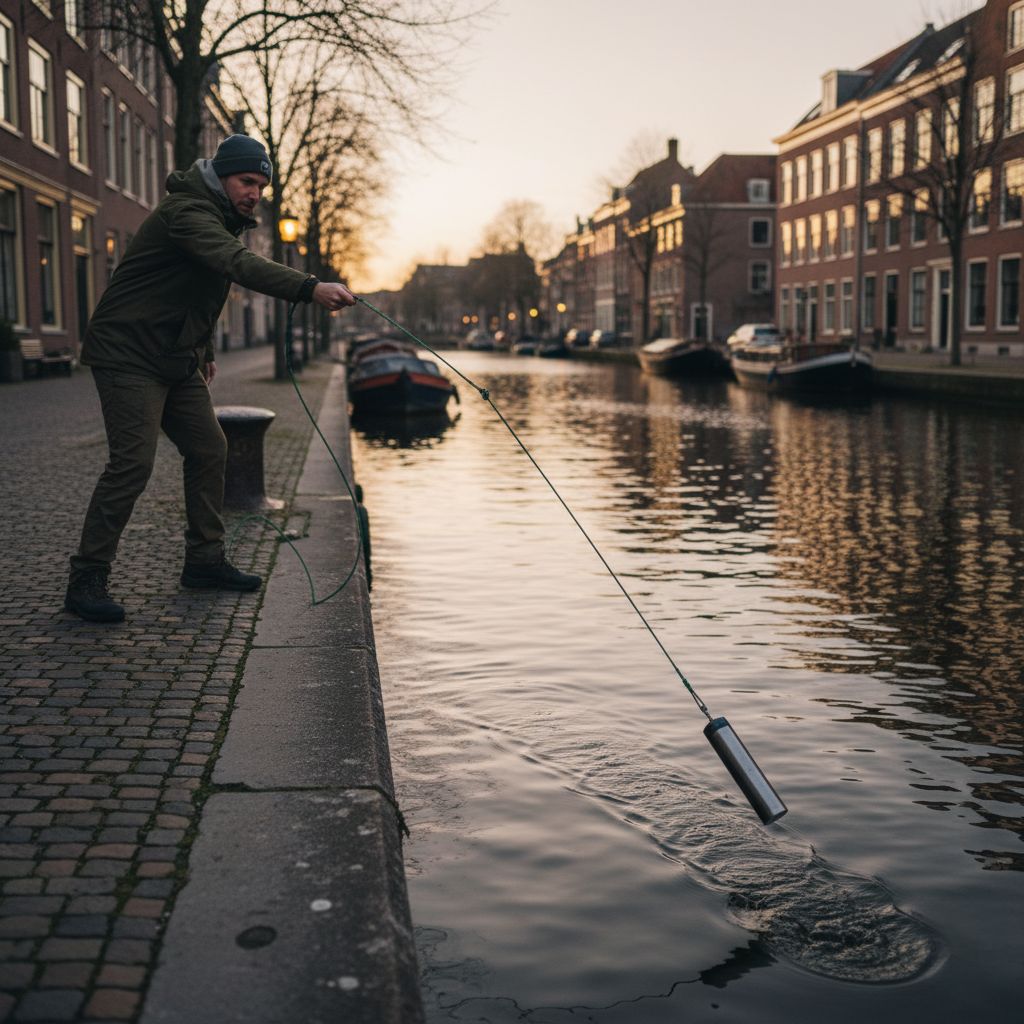
How Magnet Fishing Works
Neodymium magnets create strong magnetic fields that attract iron, steel, and other ferromagnetic alloys. When your magnet touches a metal object underwater, the field pulls it against the magnet’s face. Friction plus magnetic force keeps it stuck while you haul the object out.
Three forces decide success:
Pull force rating: lab-tested max force under perfect contact on clean, thick steel.
Contact quality: flat-to-flat contact beats point contact. Rust, silt, paint, or shape reduce grip.
Leverage while lifting: smooth, vertical pulls maintain contact; side loads break it.

Magnet Fishing Gear Checklist (Everything You Actually Need)
Start with the essentials, then add upgrades:
Fishing magnet (single- or double-sided, or a 360° all-around magnet)
Rope: 8–10 mm braided, low-stretch; rated above your magnet’s pull force
Carabiner or swivel: reduces rope twist
Threadlocker (blue): secures eyebolt threads on the magnet
Gloves: cut-resistant; wet grip matters
Scraper/brush: to clear rust and silt off the magnet face
Buckets/tubs: for finds and waste sorting
Non-magnetic pry bar: to help unstick from large flat metal
First-aid kit + magnet safety cards (reminders about pinch hazards)
Local rules list: printed or saved to your phone

Choosing the Right Fishing Magnet (And Why Pull Force Isn’t Everything)
Pull force numbers sell magnets, but there’s more to it. Your best pick depends on waterway, target size, and technique.
Single-Sided vs. Double-Sided vs. 360°
Single-sided: strongest direct pull on flat surfaces; great for vertical lifting from docks.
Double-sided: two faces for dragging along the bottom; more hits when scanning.
360° (all-around): magnetic field wraps the body; outstanding for dragging and locating odd-shaped items, often at a premium price.
Coatings and Corrosion
Good fishing magnet manufacturers use Ni-Cu-Ni triple plating or epoxy over neodymium and steel housing. Epoxy resists abrasion; Ni-Cu-Ni looks premium but needs care. Freshwater is forgiving; brackish or saltwater demands cleaning and a protective rinse.
Table 1 — Magnet Style Comparison (Quick View)
| Magnet type | Typical use case | Contact style | Pros | Watch outs |
|---|---|---|---|---|
| Single-sided | Vertical lifting from piers/docks | Face-on | Strongest direct grip on plates | Fewer hits when dragging |
| Double-sided | Scanning riverbeds, canals | Edge + faces | More chances to snag items | Slightly lower direct grip |
| 360° all-around | Mixed terrain, odd shapes | All-around | Great hit rate; versatile | Higher cost; needs careful handling |

Rope, Knots, and Hardware That Won’t Let You Down
A great magnet fails if the rope slips or snaps.
Rope diameter: 8–10 mm is easy to grip and hard to tangle.
Material: braided polyester or nylon with low stretch.
Knot: double figure-eight follow-through or palomar to a swivel or carabiner.
Hardware: stainless steel carabiner; rated above load; use a swivel to fight twist.
Check before each cast: test knot, feel for abrasions, verify threadlocker is cured.
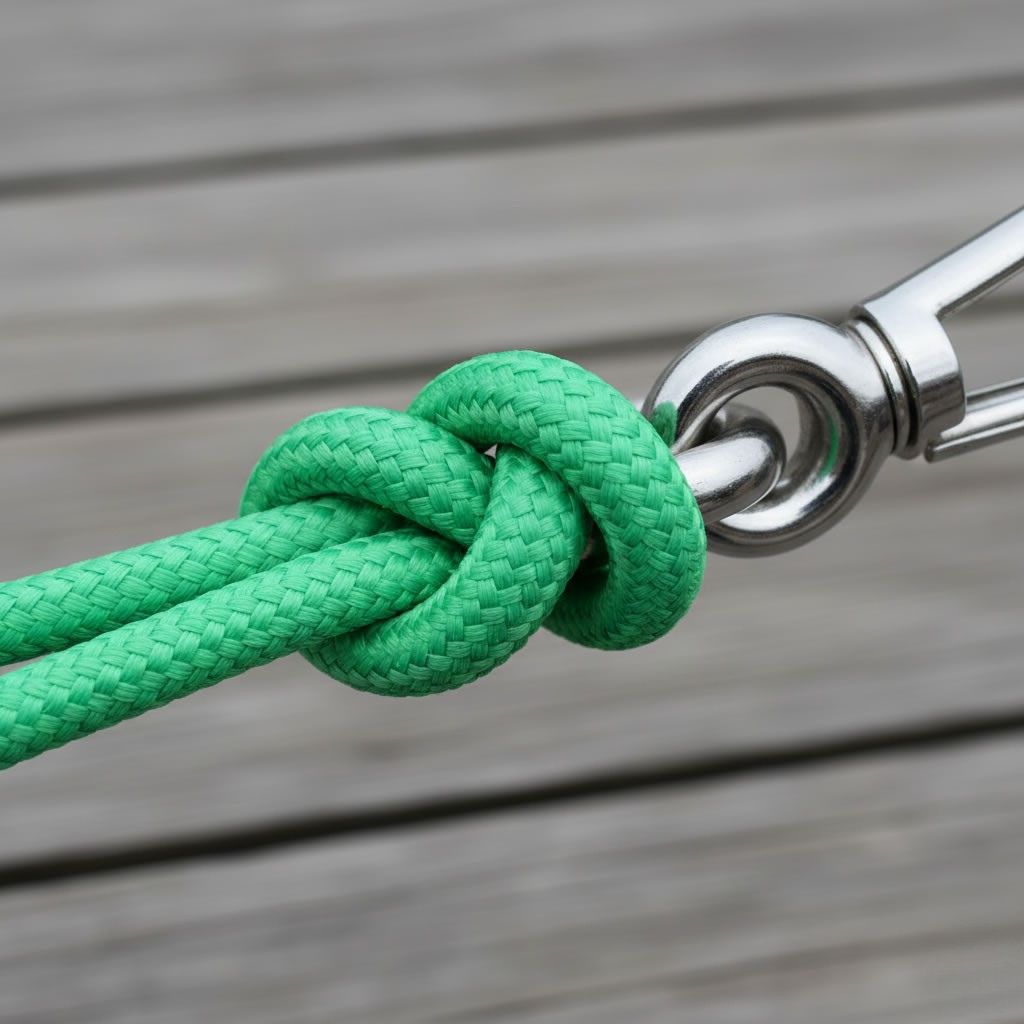
Safety and Regulations for Magnet Fishing in 2025
Magnet fishing is fun, but the magnet doesn’t know friend from finger. Keep it safe and legal.
Pinch hazards: keep hands clear of the magnet face near metal.
Sharp debris: gloves, tetanus up to date, handle rusted edges carefully.
Heavy lifts: use leverage, not your back; slide items to shore when possible.
Hazardous finds: ammo, unexploded ordnance, or suspicious objects—stop and call authorities.
Local rules: many cities treat it like metal detecting or litter recovery; some require permits; protected areas may be off-limits.
Dispose right: separate recyclables from junk; never leave piles near trails.
Step-by-Step: Your First Magnet Fishing Session
Pick a spot: bridges, old docks, lock gates, ferry ramps, mooring zones.
Scan above water: check for rebar, fences, rails that your magnet could snap onto.
Assemble: eyebolt + threadlocker; knot and carabiner; gloves on.
Throw: underhand lob, let rope pay out.
Drag slow: steady pace back to you; feel for bumps.
Set contact: if you feel a catch, lift and lower to seat the magnet flat.
Pull up: vertical and smooth; use the dock edge for leverage.
Clear the face: scrape rust/silt; keep the face clean for the next cast.
Sort finds: bucket for scrap, tub for keepers, trash bag for waste.
End-of-day rinse: freshwater rinse, dry, oil threads, and store.
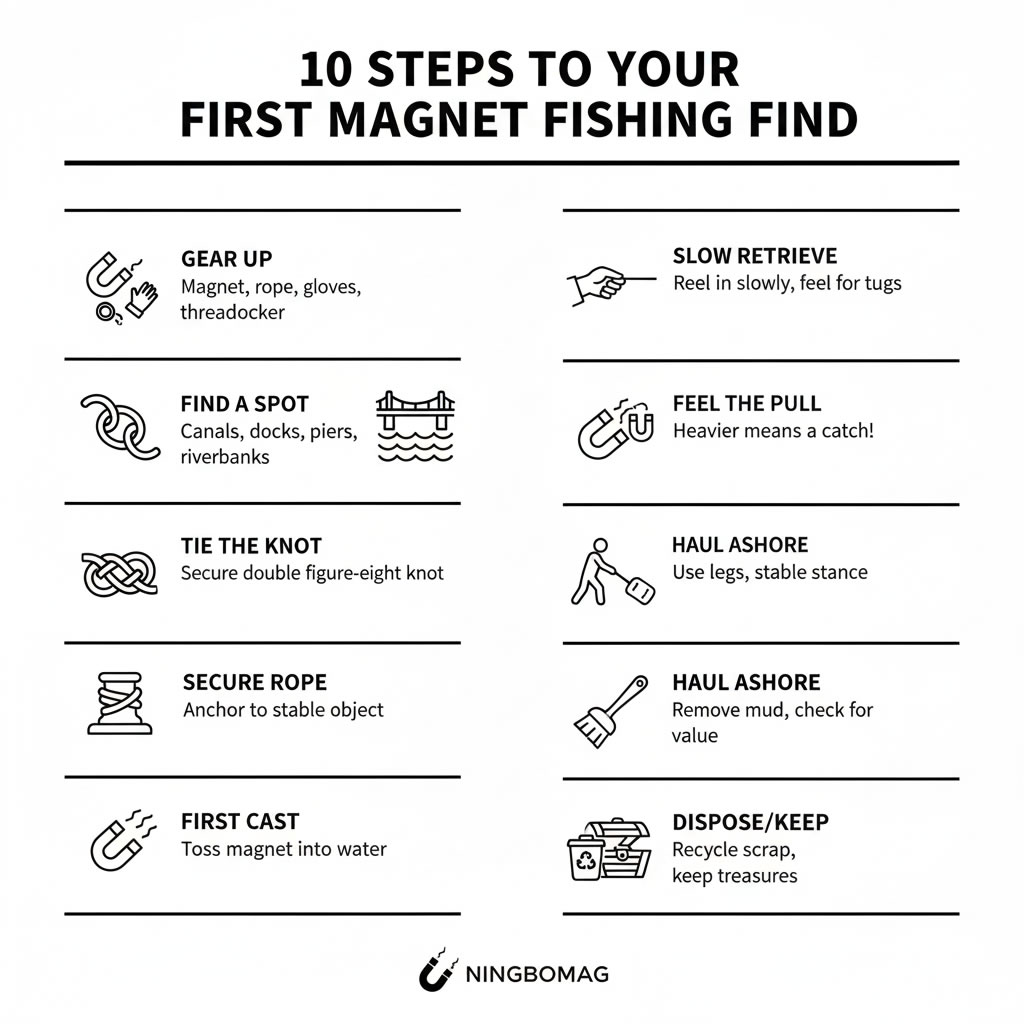
Where to Go: Reading Water and Infrastructure
Bridges and footbridges: people drop tools, phones, scooters, and small safes near edges.
Boat ramps: hardware falls off trailers; lots of ferrous debris.
Locks and weirs: historic metal, fishing gear, lost tools.
Old industrial banks: near warehouses and mills; expect heavy junk—great for cleanup days.
Ask locals about currents and known snags. Slow-moving water is easier for beginners. Always respect private property, signage, and protected sites.
Pull Force vs. Real-World Holding: How to Read the Numbers
Manufacturers list a pull force measured in lab conditions: thick, flat, clean steel with perfect contact. Real water adds rust, paint, grime, and odd shapes. Expect 30–60% of the headline number on average.
Common sense rules:
Bigger, cleaner surfaces = more grip.
Edge grabs on round or thin items = less grip.
Double-sided magnets excel at finding; single-sided excel at lifting plates.
360° magnets shine in messy bottoms where contact angle changes constantly.
Table 2 — Pull Force Reality Check
| Rated pull (lab) | Typical real-world hold | Use case notes |
|---|---|---|
| 300–500 lb (135–225 kg) | 120–300 lb | Starter range; keys, tools, bike parts |
| 800–1000 lb (360–450 kg) | 300–600 lb | Strong all-rounder; small safes, plates |
| 1500–2600+ lb (680–1180+ kg) | 600–1200+ lb | Heavy recovery; large plates, dense scrap |
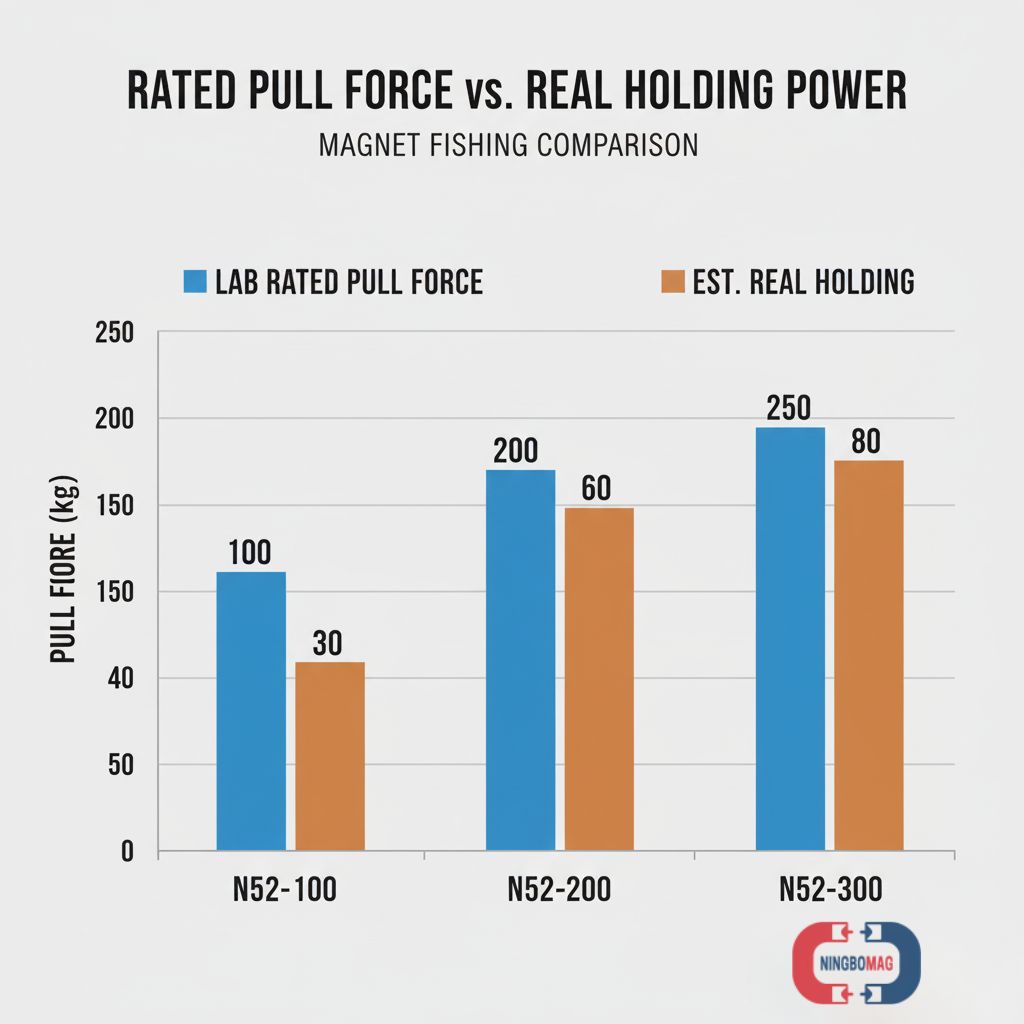
Magnet Fishing Supplies That Make Days Easier
Beyond the big three (magnet, rope, gloves), smart magnet fishing supplies include:
Throwing float: keeps line position visible and reduces snag risk.
Rope bag: pays out line tangle-free.
Collapsible grappling hook: helps when the magnet slips on curves.
Plastic wedge/scraper: to break suction without scratching coating.
Anti-rust wipes: quick clean on the bank.
Table 3 — Recommended Kit Bundles
| Bundle | What’s inside | Skill level | Notes |
|---|---|---|---|
| Starter | 500–800 lb magnet, 8–10 mm rope, gloves, threadlocker | First-timer | Safe intro; easy handling |
| Explorer | 1000–1500 lb, rope bag, swivel, scraper, brush | Growing skills | Faster scanning, better control |
| Recovery | 2000+ lb, 360° or double-sided, grappling hook, pry bar | Experienced | Heavy lifts; inspect rope often |
Common Problems and Quick Fixes
Magnet keeps slipping off curved items → Rock it to seat, then lift; add grappling hook.
Rope twist → Add a swivel; flake the rope neatly in a bag.
Stuck to a big plate → Slide sideways to an edge; use a plastic wedge to break suction.
Few finds → Switch to double-sided or 360°; change angle; move 5–10 meters along shore.
Coating scuffs → Rinse, dry, dab epoxy on small chips; store dry.
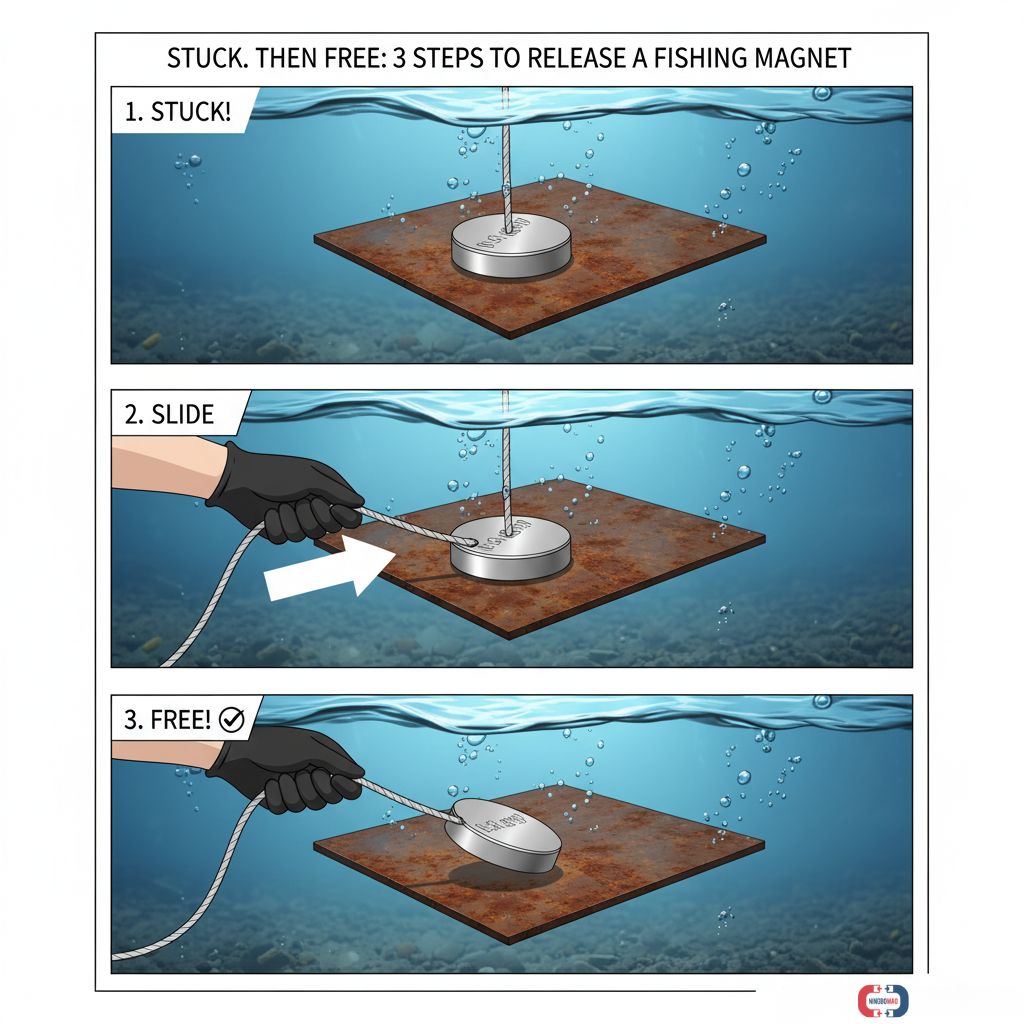
Costs, ROI, and What “Best Magnet Fishing Magnets” Really Means
“Best magnet fishing magnets” depends on goals:
Low cost cleanup: a reliable 500–800 lb single-sided set is fine.
Hunting variety: 1000–1500 lb double-sided hits more targets per hour.
Heavy recovery: 2000+ lb 360° saves time on larger jobs—but needs skill and care.
If you plan two or more sessions per month, a mid-range double-sided often returns more finds per hour than a cheaper single-sided—because it increases hits even if its vertical pull is slightly lower.
Care, Cleaning, and Storage: Make Your Magnet Last
Rinse after use, especially after saltwater or dirty canals.
Dry fully, including threads.
Oil the eyebolt threads lightly.
Check coating and re-epoxy minor scuffs.
Coil rope dry and store in a breathable bag.
Keep away from cards and electronics; neodymium fields are strong.
Environmental Tips and Ethics
Pack out all waste: your cleanup helps everyone.
Photograph finds, then recycle what you can.
Respect history: report potentially significant artifacts per local law.
No magnet fishing where it could disturb habitats or protected structures.
Community days: pair with local volunteers; it’s more effective and fun.
What Sets a Fishing Magnet Manufacturer Apart
When you buy from a fishing magnet manufacturer like NingboMag Co., Ltd., you get:
Material control: neodymium grades (e.g., N35–N52), coercivity choices, and plating consistency.
Customized builds: thread size, eyelet style, housing design, and branded packaging.
Quality control: pull force verification, coating adhesion checks, salt-spray tests.
Export experience: compliant documents, reliable lead times, and protected shipments.
Scale: wholesale pricing for retailers and projects.
Browse our fishing magnets for sale and request spec sheets: https://permanentmagnet.net/fishing-magnet/
See our broader magnet expertise: https://permanentmagnet.net/
Specifications to Know Before You Buy
Magnet grade: higher grades (N52) pack more strength per volume but mind cost and demagnetization curves.
Operating temperature: most neodymium loses strength above ~80°C; fine for water use.
Housing: steel cup focuses the field to the face—more usable pull.
Plating: Ni-Cu-Ni or epoxy; epoxy excels in abrasion-heavy use.
Eyebolt thread: metric or imperial; confirm your carabiner fits.
Rope rating: match or exceed expected real-world hold, not just “rated pull.”
Legal & Local: Do a Quick Check Before Every Trip
Rules change: some waterways have heritage protections; others require permits.
Know the contact: save the non-emergency number for local authorities.
Group events: notify park or city staff if you plan a bigger cleanup.
For a broad hobby overview, see magnet fishing—then come back to us for the equipment that lasts.
Sample Kit Recommendations
Urban canal starter: 800–1000 lb double-sided, 10 mm rope, swivel, gloves, scraper.
Lake explorer: 1500 lb double-sided or 360°, rope bag, grappling hook.
Heavy recovery: 2000–2600 lb 360°, pry bar, backup rope, larger carabiner.
Order direct from the manufacturer for consistent pull performance, batch traceability, and bulk support: https://permanentmagnet.net/fishing-magnet/
Why Choose NingboMag (PermanentMagnet.net)
NingboMag Co., Ltd. designs and makes permanent magnets across neodymium, AlNiCo, samarium-cobalt, and ferrite. With a decade-plus of export experience, we build fishing magnets that meet repeatable specs, lot after lot. Our teams support customization, brand packaging, and quality documentation that purchasing teams need. When you deal direct with the fishing magnet manufacturer, you get clarity on materials, coatings, and pull tests—and your buyers sleep better.
Explore products: https://permanentmagnet.net/fishing-magnet/
Learn our broader capabilities: https://permanentmagnet.net/
FAQs for Professional Buyers and Project Leads
Q1: Can you customize pull force and housing design for private label kits?
Yes. We tune magnet grade, housing geometry, and plating. We also supply branded rope, bags, and packaging. Pull-force certificates and salt-spray data are available on request.
Q2: What’s a realistic lead time for 1,000+ kits with mixed SKUs?
Typical runs ship in 3–5 weeks after artwork and PO, subject to current capacity. We confirm schedule at order.
Q3: How do you validate “best magnet fishing magnets” performance across batches?
We run incoming material checks, in-process pull tests on jigs, coating adhesion tests, and sample destructive pulls. Batch numbers tie to QC records.
Q4: Which coating do you recommend for high-abrasion canal cleanup programs?
Epoxy or Ni-Cu-Ni + epoxy topcoat. We also suggest spare protective caps and a simple wedge tool in the kit.
Q5: Do you offer documentation for compliance and customs?
Yes—MSDS where relevant, RoHS/REACH statements for materials, packing lists with HS codes, and photos for pre-shipment approval.
Ready to equip teams with reliable magnet fishing kits—built by the original fishing magnet manufacturer? Talk to NingboMag for specifications, samples, and wholesale pricing.
Request a quote today: https://permanentmagnet.net/fishing-magnet/
Or learn more at https://permanentmagnet.net/







